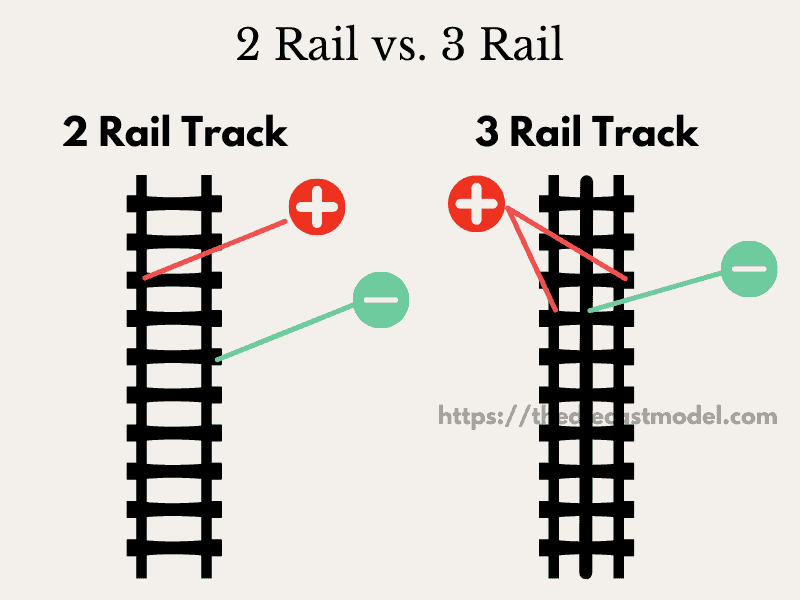Can You Get a Shock From Model Train Tracks?
Electric model train sets are a popular holiday gift, but some people are worried about getting a shock from the tracks. This is an important question since model trains can also be bought as children’s gifts. But can you really get a shock from model train tracks? Let’s find out.
Generally speaking, you can’t get a shock from model train tracks since their voltage isn’t high enough for us to feel the shock. Most model trains run at 12 volts which isn’t sufficient to electrocute a person. However, some model trains can go as high as 22 volts which is enough to electrocute people sensitive to shocks.
This post will discuss the factors that can make model trains shock you. We will first talk about why it generally wouldn’t, things to consider that might, and some precautions when you feel some ground or shock on your tracks.

Can Model Train Tracks Shock You?
Generally speaking, model train tracks can’t shock you simply because their voltage isn’t high enough for us to feel the shock. However, some model trains can go as high as 22 volts which is enough to electrocute someone sensitive to electricity.
The thing about model trains is that manufacturers know that they should make their models safe, especially if the toy is suitable for children.
That’s why they lowered the voltage of model trains so people won’t even feel a shock when touching the rails.
Model trains run on electricity which runs the motor. Instead of having a wire that follows the train when moving, the tracks serve as the connector from the power supply to the train motor.
This adds realism since there aren’t any wires following the train when it moves, which can be a huge problem, especially on large layouts.
Since these tracks also function as the wire or conductor, you would notice that the tracks aren’t covered with any insulators compared to wires.
That is why many are worried that these model train tracks can electrocute. Well, that is a normal assumption since we often hear news of people being electrocuted when stepping on actual train tracks.
However, there is a high difference between the two.
Generally speaking, stepping on a train track wouldn’t shock you except if the track is for electric trains. Steam and diesel train tracks don’t have any voltage to electrocute a person. However, electric train tracks can electrocute since they can go as high as 600 volts.
Electric trains can electrocute a person, but why can’t model trains?
Well, it boils up to the amount of power they need.
Since actual trains need more power, they receive a very high voltage of electricity that can reach up to 600 volts. This amount can cause serious injury to people.
To compare, a standard socket at home is only 110 volts. Some electric sockets can go as high as 220 volts.
However, if you compare that to 600 volts, 110 and 220 volts are cute.
It is general knowledge that our electric sockets can shock us. And as you can see, they only have 110 and 220 volts. Compare that to the 600 volts you’ll see on electric trains.
However, most model trains only run at 12 volts which isn’t enough to electrocute a person.
Of course, there are some exceptions, especially if the train runs on a boosted DCC.
Recommended Read: If you have trouble understanding DC and DCC, I made a post comparing the two here: DC vs. DCC.
Some newer model trains run on DCC power, which means they are powered like a little computer. They have a chip inside that needs more power than the old DC trains.
That’s where DCC comes in, where they can go from 16-22 volts.
The primary reason why they increased the voltage for DCC is that DCC runs train accessories such as puffing smoke, sounds, and more.
Usually, DCC trains won’t electrocute a person. However, there are times when they need to add boosters to their power supply since the layouts have a lot of accessories.
Adding boosters increases the voltage on the tracks that could reach 18-22 volts, which still won’t affect a lot of people. But someone sensitive to electricity would start to feel a tingling sensation when touching the tracks.
Thus, there are others who would feel some tingling when they touch a power booster train track. But most wouldn’t still feel any shock.
Some model and actual trains have a third rail, and some may wonder if it could electrocute them. Well, let’s talk about that next. Finally, we will also discuss some precautions when you feel some ground or tingling on your tracks.
What Happens if You Touch the Third Rail?
Touching the third rail of an actual train can electrocute a person since the power on the rails can go as high as 600 volts. However, touching the third rail of toy trains generally wouldn’t electrocute a person since its voltage isn’t high enough for our skin to conduct the electricity.
Earlier, I explained that actual electric trains could shock you because they can reach as high as 600 volts.
But how would you know if the track is for an electric train?
Well, electric trains have a third rail, usually either on top or beside the rails.
Take note that the third rails on electric trains are usually out of reach from the general public. That’s why they place it on the side of the rails or on top of the train where people won’t have access to them.
However, the side of the rails can be an issue since while people can’t reach them, they can get electrocuted when they pee on them.
That’s why you’ll hear about people getting electrocuted on trains tracks while peeing.
This is because urine has salts that conduct electricity.
Some model trains have a third rail which also functions as a power source.
Here is a simple graphical illustration of the model train’s third rail and its differences from those 2 rail tracks.

If you are interested in knowing more about the third rail of model trains, feel free to read this post here: 2 vs. 3 rail track.
You will immediately realize the big difference between the third rail from the actual and model trains.
The model train’s third rail is in the middle instead of beside the rail. The function of that rail is to prevent short circuits, especially on reverse loops.
Speaking of short circuits, there is a precaution I want you to understand in model railroading.
I explained that generally speaking, model trains wouldn’t shock you except if you decided to add boosters or are especially sensitive to electricity.
However, what if your trains run smoothly without any ground? Then all of a sudden, you can feel some ground on your models.
That’s where the problem is. Grounds and short circuits can also happen on model trains which can electrocute a person. In this case, better to bring your model train to a repair shop since it can prematurely break your train motor.
So, always keep an eye on your model trains, especially because they are classified as electronics. While they usually won’t electrocute a person, any faults in the power supply can cause some grounds and short circuits.
Thus, it is advisable to bring them to a repair shop if it can suddenly electrocute a person.
What’s next? Are you always having problems since model trains are costly? How about knowing some tips on saving money while enjoying the hobby? If you are interested, check this post here: Is model railroading an expensive hobby? Easy tips to save money on model trains.







